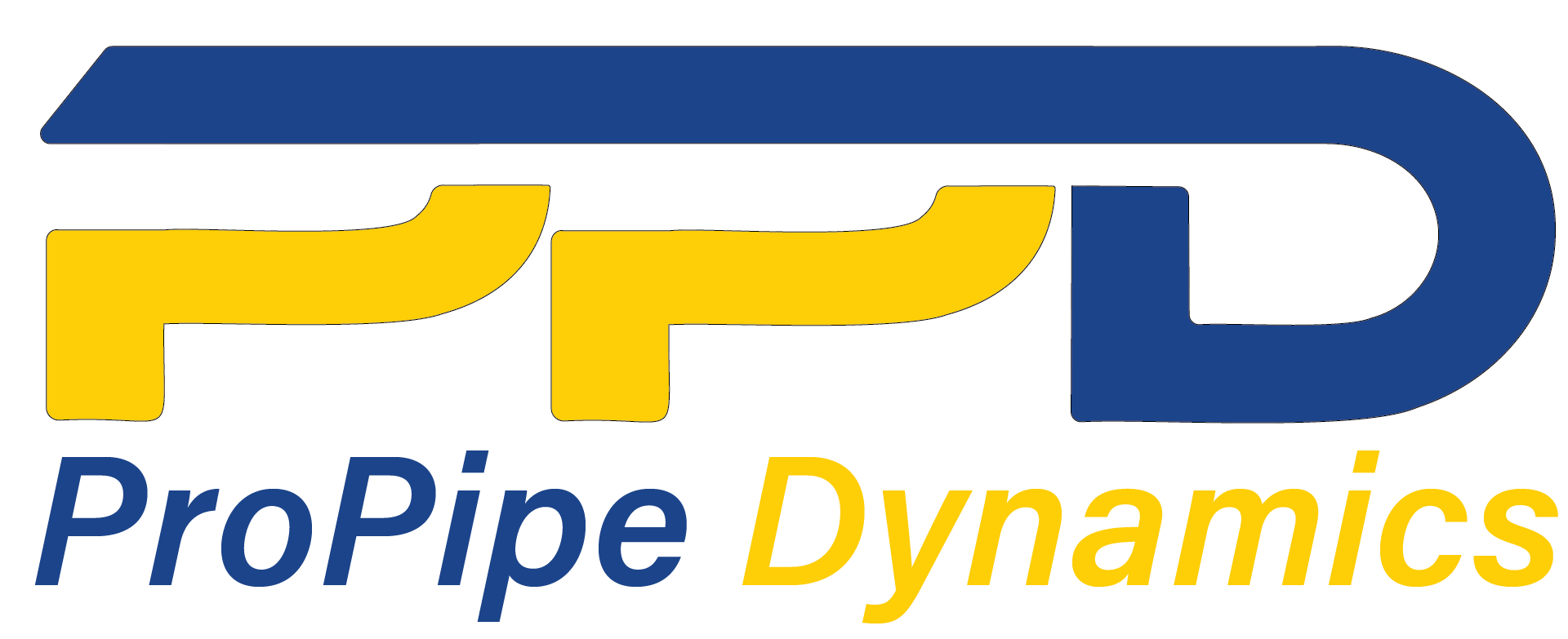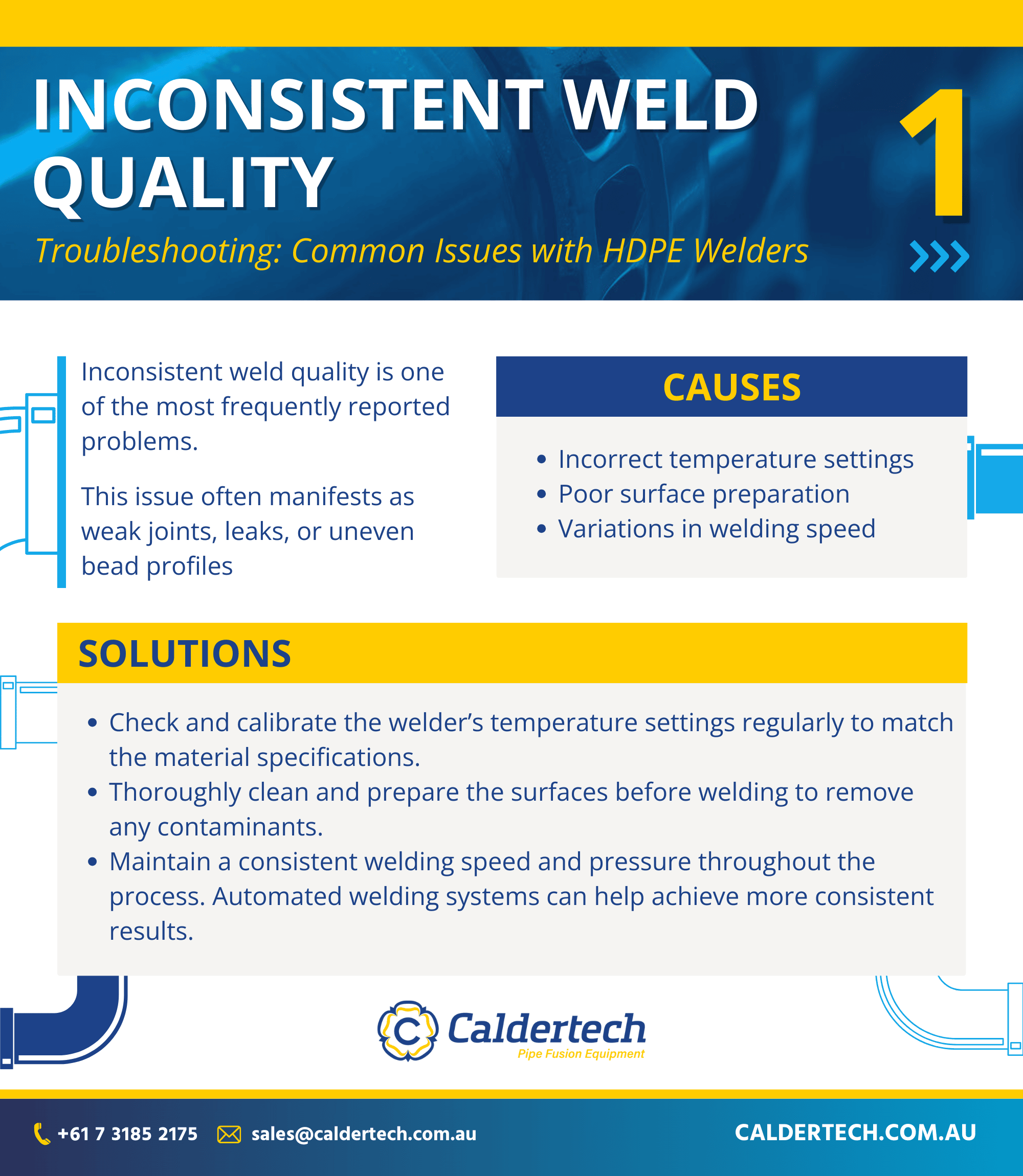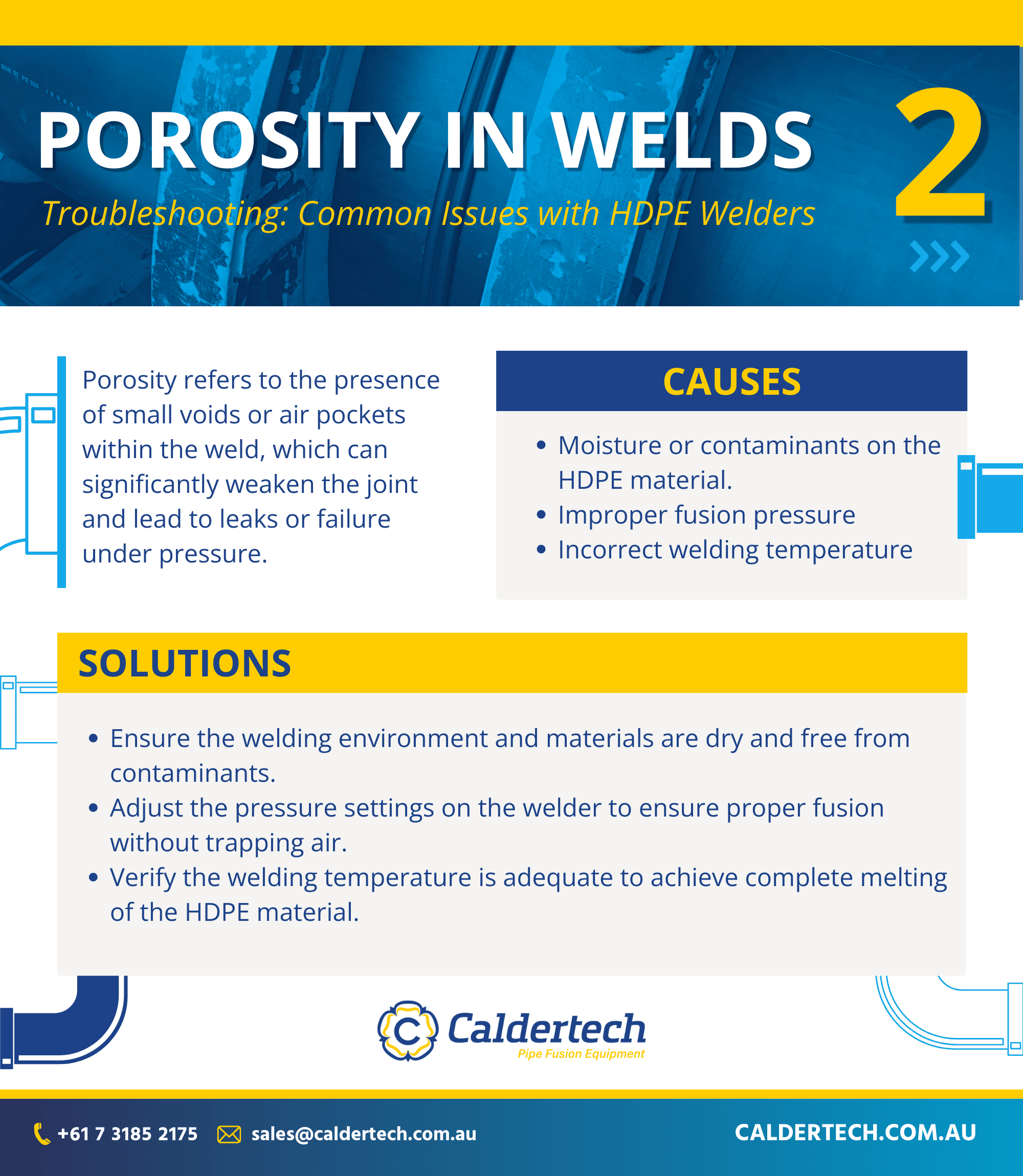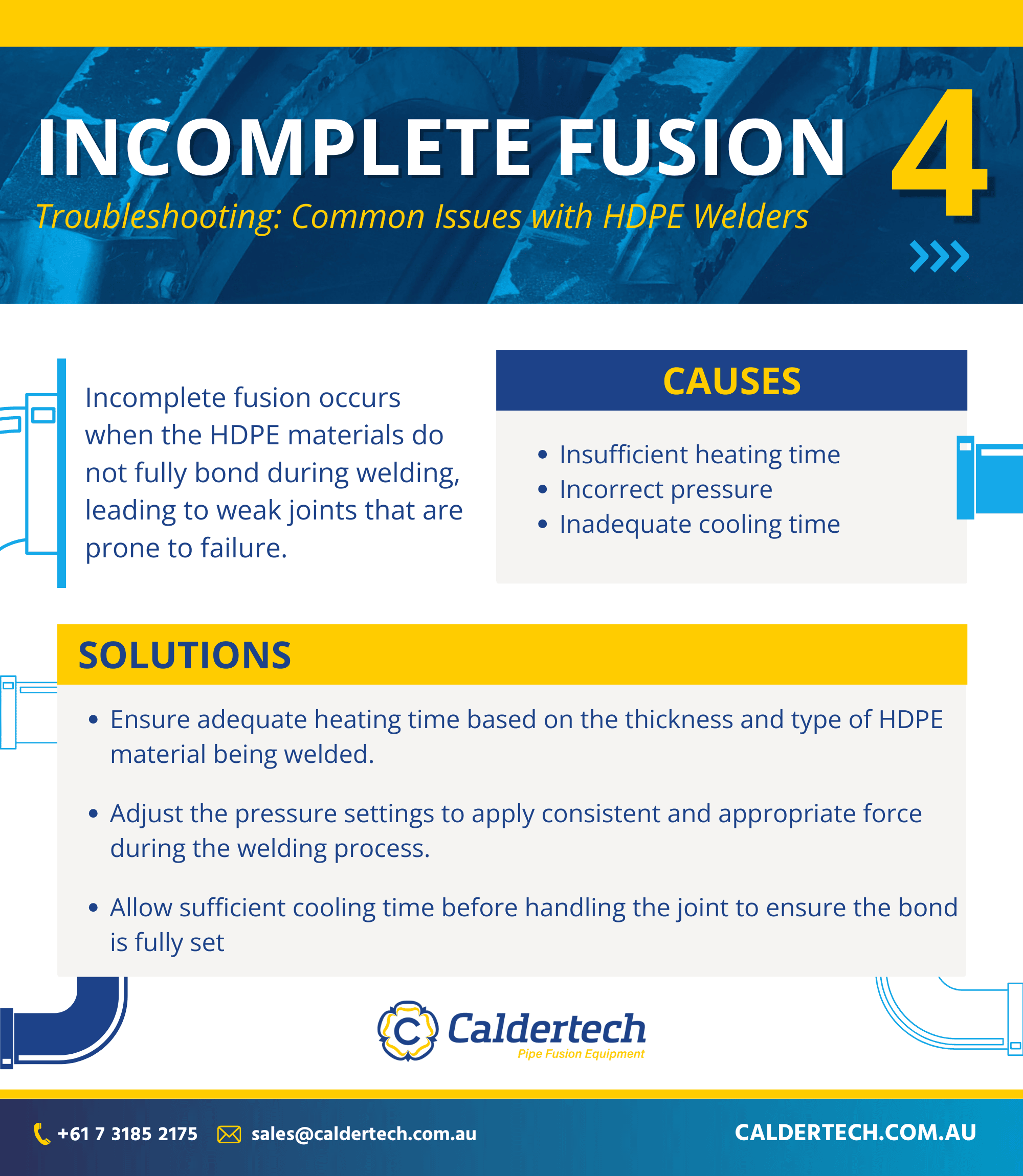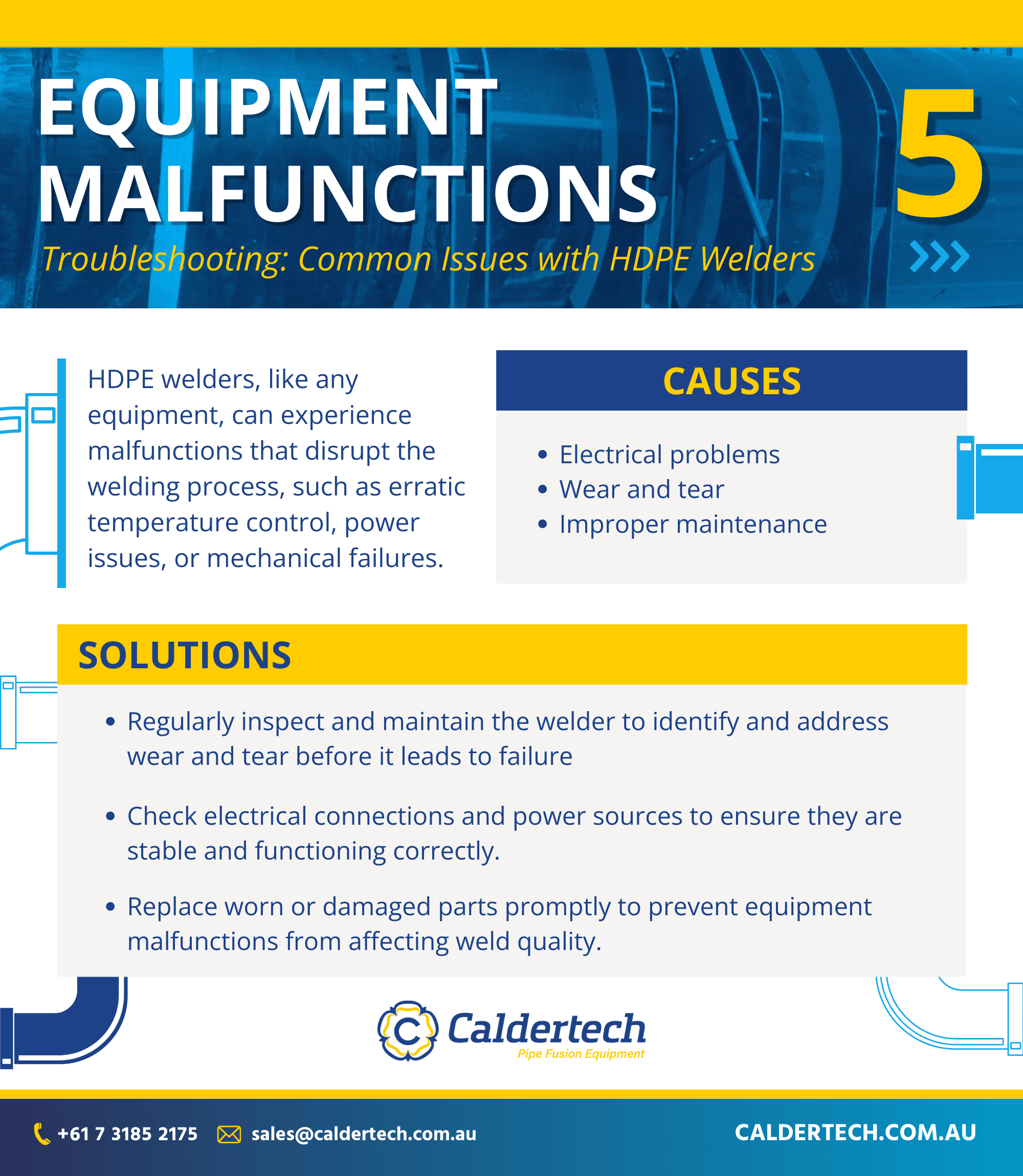High-Density Polyethylene (HDPE) welding is a critical process in various industries, from water and gas piping to chemical storage and infrastructure projects. Despite its robustness, even the best HDPE welding equipment can encounter issues that can compromise the quality of welds and the integrity of installations. This article delves into common problems encountered with HDPE welders and offers practical solutions for troubleshooting these issues to ensure reliable and effective welding operations.
1. Inconsistent Weld Quality
Issue: Inconsistent weld quality is one of the most frequently reported problems. This issue often manifests as weak joints, leaks, or uneven bead profiles.
Causes: Incorrect temperature settings: If the welding temperature is too high or too low, it can lead to incomplete fusion or material degradation.
Poor surface preparation: Contaminants like dirt, oil, or moisture on the welding surfaces can prevent proper bonding.
Variations in welding speed: Inconsistent welding speed can lead to uneven heat distribution, resulting in weak joints.
Solutions:
Check and calibrate the welder’s temperature settings regularly to match the material specifications.
Thoroughly clean and prepare the surfaces before welding to remove any contaminants.
Maintain a consistent welding speed and pressure throughout the process. Automated welding systems can help achieve more consistent results.
2. Porosity in Welds
Issue: Porosity refers to the presence of small voids or air pockets within the weld, which can significantly weaken the joint and lead to leaks or failure under pressure.
Causes: Moisture or contaminants in the welding area or on the HDPE material.
Improper fusion pressure: Insufficient pressure during welding can trap air within the joint.
Incorrect welding temperature: Too low a temperature can cause incomplete melting, leading to porosity.
Solutions:
Ensure the welding environment and materials are dry and free from contaminants.
Adjust the pressure settings on the welder to ensure proper fusion without trapping air.
Verify the welding temperature is adequate to achieve complete melting of the HDPE material.
3. Misalignment of Pipes or Fittings
Issue: Misalignment during welding can cause uneven joints, resulting in leaks, reduced strength, or failure to meet project specifications.
Causes: Improper clamping or fixturing: If the pipes or fittings are not securely clamped in place, they can shift during the welding process.
Incorrect positioning of the welding machine or components.
Operator error during setup or welding.
Solutions:
Use proper clamping tools and fixtures to secure the pipes or fittings in place before welding.
Double-check the alignment of all components before initiating the weld.
Train operators to follow best practices for setup and alignment, or consider using automated alignment tools where possible.
4. Incomplete Fusion
Issue: Incomplete fusion occurs when the HDPE materials do not fully bond during welding, leading to weak joints that are prone to failure.
Causes:
Insufficient heating time: If the material is not heated long enough, it won’t fully melt and bond.
Incorrect pressure: Too little pressure during fusion can prevent the materials from fully joining.
Inadequate cooling time: Moving or disturbing the joint before it has completely cooled can disrupt the bond.
Solutions:
Ensure adequate heating time based on the thickness and type of HDPE material being welded.
Adjust the pressure settings to apply consistent and appropriate force during the welding process.
Allow sufficient cooling time before handling the joint to ensure the bond is fully set.
5. Equipment Malfunctions
Issue: HDPE welders, like any equipment, can experience malfunctions that disrupt the welding process, such as erratic temperature control, power issues, or mechanical failures.
Causes:
Electrical problems: Power surges, faulty wiring, or worn-out components can cause malfunctions.
Wear and tear: Over time, parts of the welder may wear out or become damaged, leading to performance issues.
Improper maintenance: Lack of regular maintenance can lead to equipment failures.
Solutions:
Regularly inspect and maintain the welder to identify and address wear and tear before it leads to failure.
Check electrical connections and power sources to ensure they are stable and functioning correctly.
Replace worn or damaged parts promptly to prevent equipment malfunctions from affecting weld quality.
6. Excessive Flash Formation
Issue: Excessive flash formation, or the extruded material that forms at the weld joint, can be a sign of over-welding or improper settings.
Causes:
Excessive pressure during the welding process.
Overheating of the material leading to excessive melt flow.
Improper alignment of the welding components.
Solutions:
Reduce the pressure settings to minimize excessive material extrusion.
Adjust the welding temperature to prevent overheating of the HDPE material.
Ensure proper alignment of the components to achieve a clean, even weld.
Conclusion:
Troubleshooting common issues with HDPE welders is essential for maintaining the quality and integrity of HDPE installations. By understanding the causes of these problems and implementing the appropriate solutions, operators can enhance the reliability of their welding processes and extend the lifespan of their HDPE systems. Regular maintenance, proper training, and adherence to best practices are key to preventing and addressing issues, ensuring that HDPE welding projects are completed successfully and efficiently.
